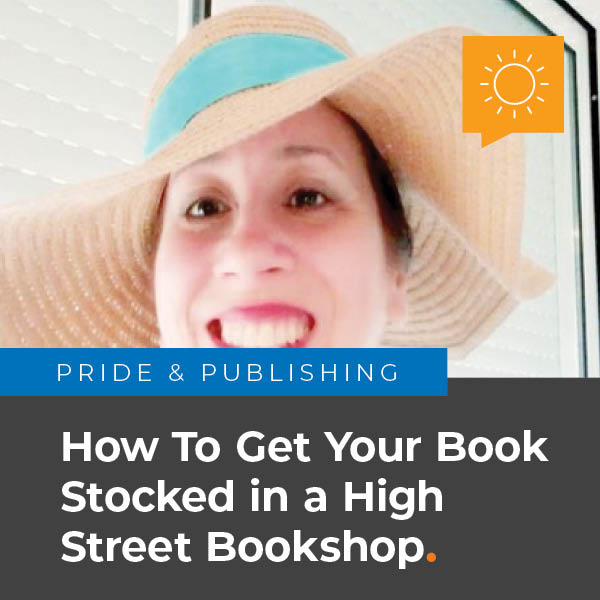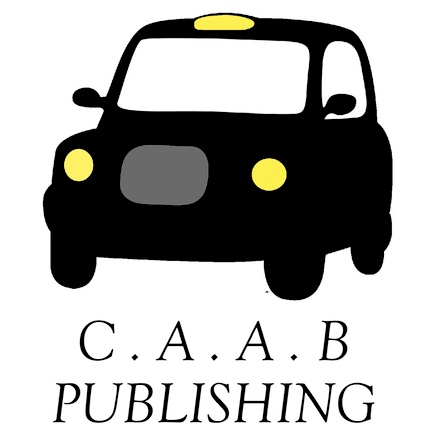By Chrissy Brown | C.A.A.B. Publishing

So, you’ve finally written your book. After weeks, months or even years of writing, it’s finally finished. You have printed copies and you’re ready to share your hard work with readers.
Congratulations!
You crave that moment of glory when you see your book on a bookshop shelf.
But how do you get your indie novel onto the shelves of a high-street bookshop?
Question one is usually. Will the bookshop stock it? Well, there is only one way to find out, drop them a line. Booksellers like to be emailed. It gives them time to think about your proposal; it gives them time to chat to colleagues, and it gives the opportunity to deal with the request within their normal day.
If you do decide to show them the book in person, please don’t visit unannounced. It’s beneficial instead to email ahead so they can arrange a quick appointment for you with the appropriate buyer at a time that works with the shop diary.
What Booksellers need to know to help them make a decision – you should include the following information in your proposal:
• A quick synopsis of the book – just two or three sentences.
• A couple of lines about who you are.
• Include a professional invoice outlining your terms of business.
• The sales details – How much your book retails for.
• How much you are selling it to bookshops for. Nielsen reports that the average discount bookshops receive is just over 40% off the recommended retail price.
•The format (Paperback/ Hardback). It is always recommended that the book has a spine; that the title and author is printed on the spine; and that there is a 13 digit EAN barcode (based on the ISBN) printed on the book.
• Returns’ information. The most usual trade practice for independently published titles would be for the books to be supplied on ‘sale or return’ where the bookshop pays for the stock according to the payment terms of your invoice, but has the right to return unsold stock for a full refund.
• Think about payment terms and the length of time the bookshop should have the stock for sale. If after this agreed length of time the book has not sold it is your responsibility to collect unsold stock. If the book is not collected after 3 months, the bookseller can dispose of the stock.
• A few sample pages for the seller to read.
• A jpg image of the cover.
• Who the competitor – or comparable authors – are in your eyes?
• In which section you would suggest the seller display the book. What is the genre, the age range, etc.
• If the book has any local ties, is it set in the local area? Did you go to school nearby? Does it mention local people or places?
• Do you have any local publicity lined up? (i.e. features, adverts, interviews in local newspapers/radio) This can have a real impact on improving local sales.
Tips –
• Have printed copies of your book that are not Print on demand copies. Have them professionally printed.
• Be competitive regarding the pricing of your book.
• Look at the production quality; a well presented finished product speaks volumes. Look at books in similar genres to your own on bookshop shelves and note the current design styles/finishes/fonts being used.
• Give a lot of thought to the jacket design. Review the competition. If you want your book to take up space on a shelf face out the jacket must be of excellent design and quality.
• Pick your time of year carefully. The majority of new writers are launched in the beginning of the year. If you release too close to Christmas your book may get lost on the shelves. If you come in February or March, often there is space to display your book, giving it a better chance of selling.
• Think about how you might promote your book and direct people to the bookshop for sales.
• Outline your marketing & publicity plan for the book.
There are plenty of wonderful small indie bookshops that will delight in taking a few books from a local author, they may offer signing dates, or meet the author events. The best thing you can do is build up a relationship with these lovely shop owners and let them see you are dedicated to your book, and getting it into readers hands.
The more you do, the more you sell.

Featured Book from C.A.A.B.
The Wishing Well Series
By Liana Wall
The Wishing Well Collection by Liana Wall is a series of books written for younger children. They are adorable anthologies and each story has a sweet message for the reader. They show children how to be brave, accepting or kind. The stories focus on a family of fairies and their adventures in their enchanted land full of wonderful creatures and magical fun.
C.A.A.B Publishing

CAAB Publishing Ltd is a traditional, small, indie company helping unknown authors have a voice and inspiring new writers to take that first step into the world of publishing.

Continue Reading
Article originally Published in the February / March 2023 Issue: Connection.
